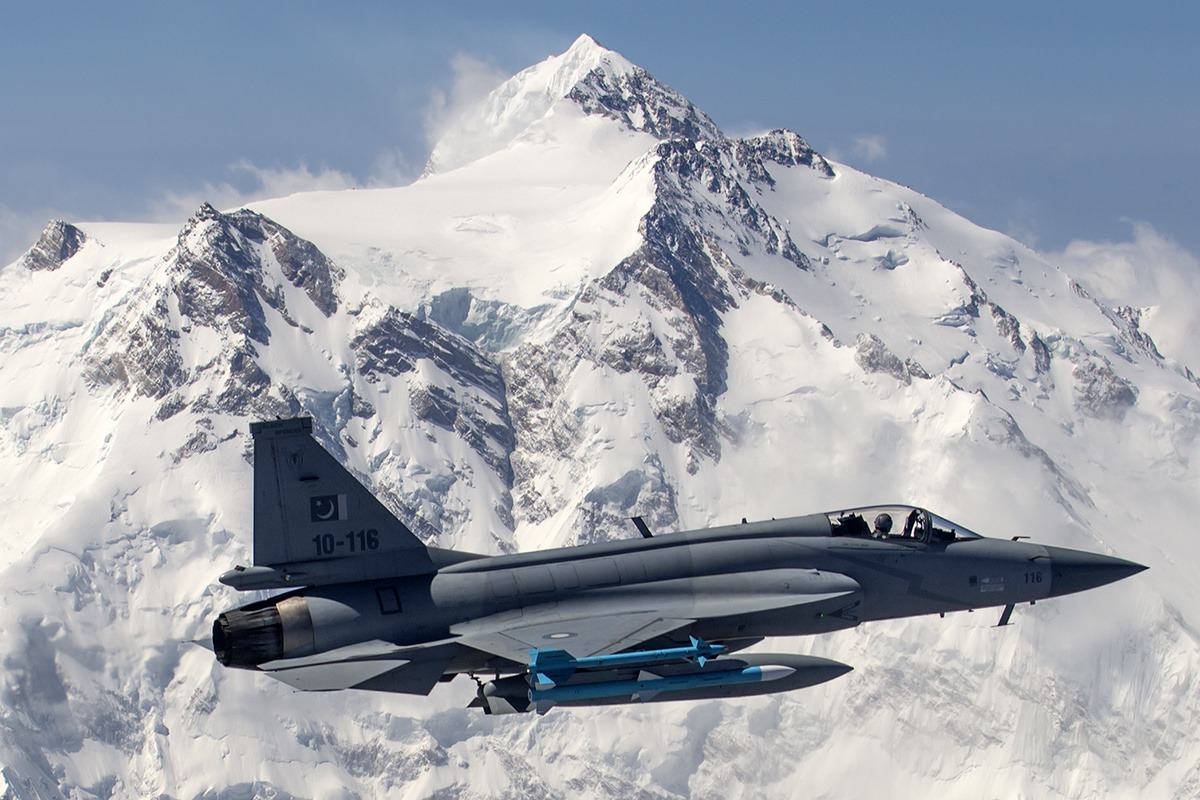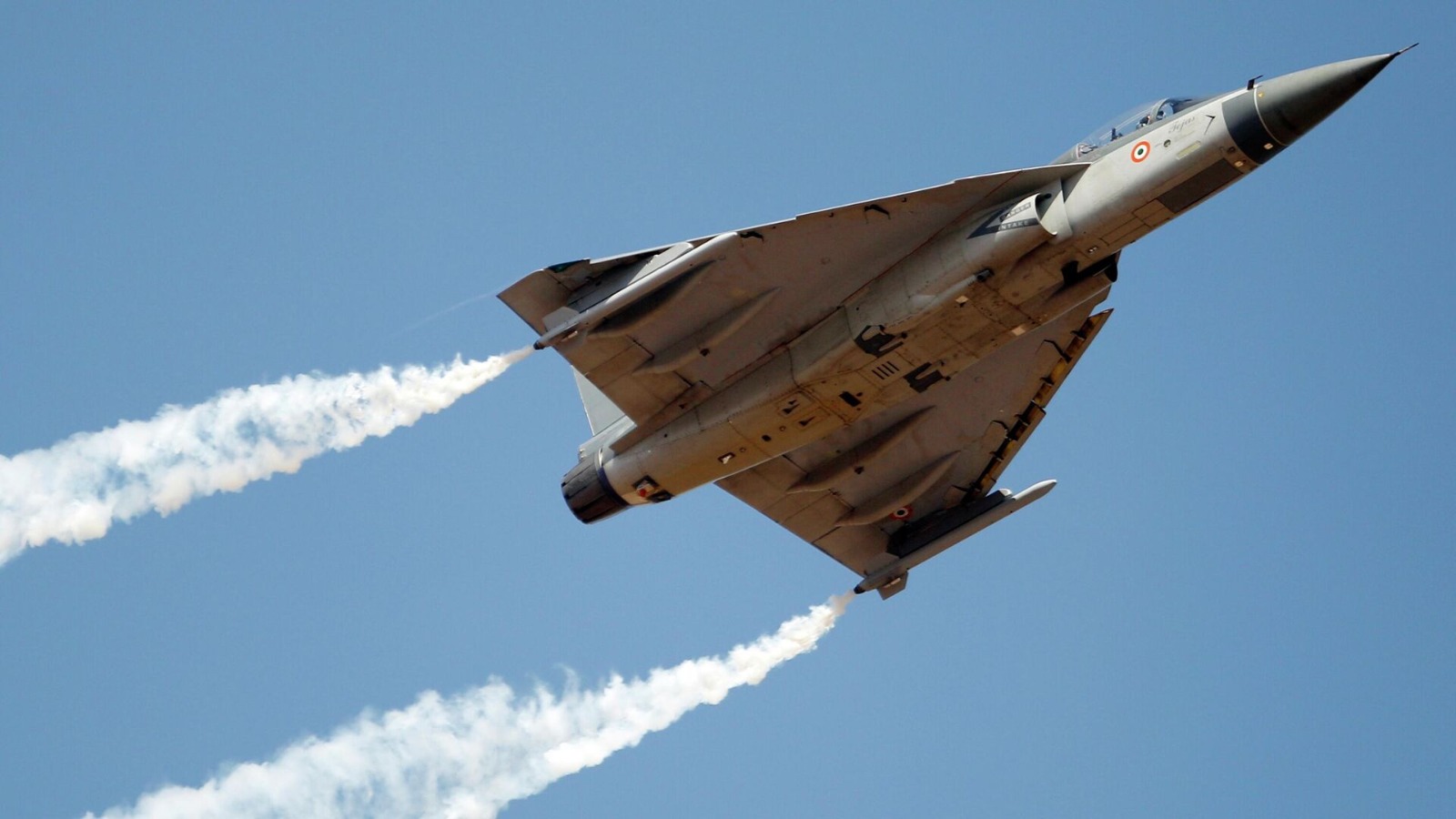The skies above the Indian subcontinent are witnessing a fierce rivalry as India and Pakistan unveil their latest supersonic fighter jet offerings – the Tejas Mk 1A and the JF-17 Block III. These aircraft are not only vying for regional air supremacy but also jockeying for a slice of the global market for cost-effective combat jets.
The Indian Air Force (IAF) is set to receive the upgraded version of the indigenous supersonic fighter aircraft, the Tejas Mk1A, by July. Meanwhile, in December 2023, the Pakistan Air Force (PAF) marked a significant milestone by officially incorporating the latest version of the JF-17 Thunder – Block III.
India’s LCA Tejas and Pakistan’s JF-17 compete fiercely not only for regional air superiority but also for global market share. Each represents a cost-effective option for military missions.
Production: The Tejas is a homegrown marvel forged through the collaborative efforts of India’s Aeronautical Development Agency (ADA) and Hindustan Aeronautics Limited (HAL). Across the border, the JF-17 is the product of a Sino-Pakistani partnership between the Pakistan Aeronautical Complex (PAC) and China’s Chengdu Aircraft Industry Complex (CAC).
Advanced Aircraft Evolution: The MK1A is an advanced version of its predecessor, the MK 1, and is classified as a 4.5-generation aircraft. In contrast, the JF-17 Block III is described by PAF officials as a “fourth-generation plus” fighter jet, offering several enhanced capabilities over the earlier Block II version.
Budget-Friendly Powerhouses: Both fighters are designed for similar military missions and requirements, positioning them to compete in the global market for budget-friendly combat aircraft. Both India’s LCA Tejas and Pakistan’s JF-17 Block III are single-engine, lightweight, multirole fighters designed to be cost-effective.
Replacing Aging Fleets: Conceived as 4.5th-generation jets, the Tejas and JF-17 Block III were tasked with replacing their nations’ aging third-generation fighter fleets—the venerable MiG-21 for India and a motley crew of Chinese and French jets for Pakistan.
First Flight: Flight tests have shown promising results for both aircraft.
The LCA Tejas MK 1A successfully conducted its first test flight on March 28, 2024. On the other hand, the JF-17 Block III —a single-seat variant—completed its inaugural flight in Chengdu, China, on December 15, 2019. The PAF has acquired an impressive fleet of 50 JF-17 Block III aircraft, with the first one joining the ranks on December 4, 2023. Mass production began at PAC Kamra on December 30, 2020.
Specifications and Features: HAL has modernized the aircraft by incorporating advanced technology and making slight design adjustments, resulting in nearly a 50% increase in indigenous content compared to its predecessor – MK 1. The MK 1A demonstrates versatility, fulfilling various roles such as ground attack, interception, air-to-air combat, and air defense. Despite its external resemblance to the MK 1, the MK 1A features new electronics, processors, display systems, and fly-by-wire hardware.
The updated version offers improved situational awareness, with a slightly larger canopy and aerodynamic changes enhancing maneuverability. It boasts approximately nine hard points on its underbelly, capable of carrying a variety of weaponry, including Beyond Visual Range (BVR) missiles, Air-to-Air/Ground missiles, and Advanced Short Range Air-to-Air missiles (ASRAAM). External self-protection jammer pods enable the aircraft to engage in electronic warfare. Additionally, an indigenously developed digital fly-by-wire flight control computer has been integrated into the Tejas jet, replacing mechanical flight controls with an electronic interface.
On the other hand, according to the PAF, the JF-17 Block III aircraft offers superior maneuverability, extended range, and enhanced combat capabilities. It features a single-seat variant and incorporates advanced technological developments, including the NRIET/CETC KLJ-7A AESA radar. This radar, developed by the Nanjing Research Institute of Electronics Technology (NRIET), can track 15 targets simultaneously and engage four targets at once.
It has a three-axis digital fly-by-wire flight control system and an Infrared Search and Track (IRST) system. Additionally, it is equipped with a Helmet-mounted Display and Sight (HMD/S) system jointly developed by Pakistan and China.
Moreover, the enhancements in the Block III variant extend to engine upgrades. Initially powered by the Klimov RD-93MA after-burning turbofan, plans are underway to upgrade to the Guizhou WS-13 engine, which aims to increase thrust and optimize the thrust-to-weight ratio.
Cost: Since 2016, the Indian Air Force (IAF) has been developing an upgraded version of the Tejas Mk 1A with a reported budget of US$5.9 billion.
In contrast, the project cost for the JF-17 Block III remains undisclosed. However, Iraq recently expressed interest in purchasing 12 JF-17 Block IIIs for $664 million, translating to approximately $55 million per unit.
Initially, JF-17 airframes were produced solely in China after its first flight in 2003. Presently, Pakistan manufactures 58% of the aircraft, with the remaining 42% produced in China.
Exports: Besides Pakistan, Nigeria and Myanmar have already acquired the JF-17 Thunders, and Azerbaijan has finalized the deal to buy them. There are reports that Iraq could also buy these Sino-Pak jets. For LCA Tejas, the Indian Air Force remains its primary & biggest customer. Despite serious negotiations with Malaysia and Argentina, no export orders have been received yet.
Crash History: On March 12, 2024, an Indian Air Force LCA Tejas crashed for the first time since its debut in 2001. The crash occurred near Jaisalmer while returning from the ‘Bharat Shakti’ exercise in Pokhran, Rajasthan. The pilot ejected safely, and there were no casualties despite the aircraft damaging a hostel.
In contrast, since its first flight in 2003, the JF-17 has crashed four times, resulting in at least one death. According to the Flight Safety Foundation’s Aviation Safety Network, JF-17 crashes occurred in November 2011, September 2016, September 2020, and August 2021.
Future Horizons: As these aerial titans take to the skies, their nations are already looking ahead. As ET previously reported, the Pakistan Air Force (PAF) has unveiled plans for the JF-17 PFX (Pakistan Fighter Experimental), indicating that the Block-III variant is not the final iteration in the JF-17 series. The development of the JF-17 PFX aligns with PAF’s long-term modernization strategy.
On the other hand, India is focused on accelerating the delivery of the Mk1A to facilitate the introduction of the LCA Mk2. The primary objective is to promptly fulfill all Mk1A orders, thereby freeing up production capacity for the subsequent model, the LCA Mk2.
This version will feature more capable engines—the GE 414—and will be locally manufactured in India under a technology transfer agreement. The initial LCA Mk2 is slated for serial production readiness by 2027, with ongoing efforts to prepare the prototype. Compared to its predecessors, the MK2 is projected to have extended flight duration and significantly increased weapons payload capacity.
According to reports, in terms of deployment, the IAF plans to establish the first squadron of Tejas Mk 1A at the Nal air base in Rajasthan’s Bikaner district, replacing one of the existing MiG-21 squadrons stationed there.
Amidst escalating regional tensions and burgeoning global aspirations, the skies over the Indian subcontinent are poised for an electrifying aerial showdown as these 4.5th generation fighters vie for dominance. Keep an eye out for the unfolding chapters of this high-flying saga.

Which Is Better?
“Tejas is a more capable, maneuverable, agile, and reliable aircraft than the JF-17. The Chinese JF-17 was initially powered by a Russian RD-93 engine. Beijing found the JF-17 unsuitable for induction,” an Indian (HAL) official associated with the development of the aircraft told the EurAsian Times.
“The Chinese then offered their local ‘unproven’ WS-13 engine to JF-17 operators, which Pakistan refused for their Block-3 JF-17 fighter jets,” the official said. Unlike the GE-404 engine, which powers many military aircraft globally with an unblemished record, the unproven WS-13 engine of China is riddled with reliability issues. “Without a reliable engine, the JF-17 is very dangerous for pilot’s safety. Chances of mission success are abysmal on JF-17 equipped with WS-13 engine,” the official added.
The JF-17 was jointly developed by the Pakistan Aeronautical Complex and China’s Chengdu Aircraft Industry Corp. It has a Chinese airframe, Western avionics, and a Russian engine.
Since its induction in PAF in 2007, it has seen many crashes. The aircraft has been grounded several times due to cracks in guide vanes, exhaust nozzles, and flame stabilizers.
The LCA scores over JF-17 when it comes to serviceability. In the IAF squadron, the LCA has a serviceability of over 75 percent. “Out of 100 aircraft delivered to date, at least 40 JF-17 aircraft are known to be unserviceable. The number of accidents on this aircraft in Pakistan shows a very dismal record.
Another parameter that sets LCA one notch up the JF-17 is the fly-by-wire system. The JF-17 has a triplex redundant fly-by-wire system, and the LCA has a quadruplex redundant architecture.

Myanmar, the first country besides Pakistan to buy JF-17, was forced to ground its fleet due to technical malfunctions.
Reports suggest the reason behind the grounding in Myanmar was that the airframe of JF-17 reported “vibration issues’. The Irrawaddy Times notes: “The airframe is vulnerable to damage, especially in its wingtips and hardpoints, when the aircraft encounters strong gravitational forces, according to a former pilot of the Myanmar Air Force.”
The critical part of the JF-17 avionics is the China-made KLJ-7 Al radar, which has poor accuracy and maintenance problems, analysts say. The aircraft does not even have an effective beyond-visual-range (BVR) missile or airborne interception radar.
According to reports: “Malfunction of the Weapon Mission Management Computer has caused launch zones of BVR air-to-air missiles to shrink during combat exercises.”
For LCA Tejas, the entire software, including the flight control laws, mission computer algorithm, and weapon release solutions, are designed indigenously. There are unique features in the flight control laws that allow “carefree handling and recovering from unseen situations.”
The LCA’s Turn-Around Servicing (TRS) is less than 30 minutes. TRS is the time the aircraft takes to get airborne again after landing, as the plane undergoes servicing after each landing. This is because the LCA Tejas has all its services on Hydraulics.
The Chinese-Pakistan JF-17 uses a pneumatic system to operate some utility services in main and emergency modes. This requires regular pneumatic charging, increasing Turn-Around Servicing (TRS) time.
- Shubanghi Palve and Ritu Sharma contributed to this report.
- Email us at: editor@eurasiantimes.com




